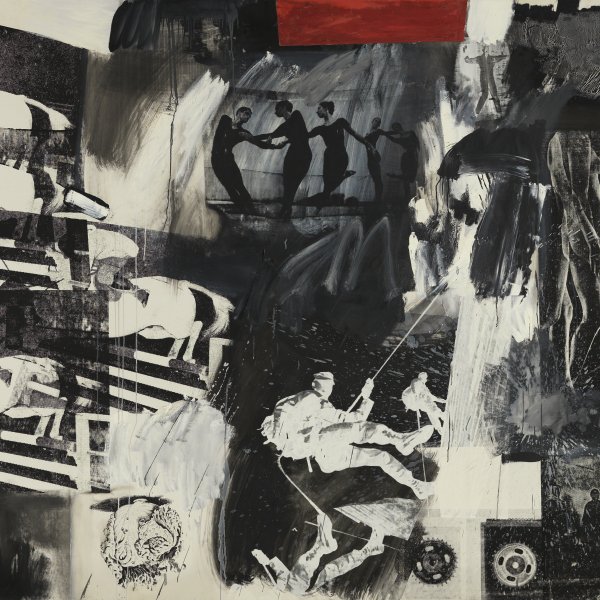Robert Rauschenberg
Port Arthur, 1925-Captiva Island, 2008
Together with Jasper Johns, in the late 1950s Robert Rauschenberg spearheaded the revival of the Dada spirit in the United States. A multi-disciplined artist with a critical outlook, he untiringly sought new forms of artistic expression that made him one of the key figures in the evolution of the art of the last decades of the twentieth century.
Rauschenberg studied pharmacy at the University of Texas, followed by art history, sculpture and music at the Kansas City Art Institute from 1946 to 1947. Soon afterwards he enrolled at the Académie Julian in Paris and later studied under Josef Albers and Jack Tworkov at the prestigious Black Mountain College in North Carolina, where he struck up a friendship with John Cage. In 1952 he travelled in Italy, France and Spain with Cy Twombly.
In the early 1950s he developed a monochromatic abstract painting based on white, red and black, in which he studied different textures. His friendship with Jasper Johns, which lasted from 1954 to 1962, gave rise to an artistic collaboration in which both experimented outside the prevailing Abstract Expressionism. Rauschenberg and Johns provided a link between the generation of older abstract artists and the young Pop artists. Towards the mid-1950s he began to produce his combine paintings, in which he blended painting, assemblages and collages of photographs with found objects, generally consumer items. His contact with Marcel Duchamp was decisive in his revival of Dadaist methods and the incorporation of collage into his work.
Influenced by Andy Warhol, in 1962 Rauschenberg began to experiment with a new type of artistic technique that became the basis of his work during the following years: silkscreen printing. This method allowed him to incorporate photographic images printed on silk screens, which he then transferred to canvas, superimposing and mixing them in the manner of collage. He then completed the picture with oil paint.
Rauschenberg was an enquiring-minded and highly versatile artist who was involved in many very different initiatives throughout his lifetime. Notable examples are his intense collaboration with his musician friend John Cage and his involvement as stage manager of Merce Cunningham’s dance company from 1955 to 1965. In 1966 he and several scientists set up a group that conducted experiments in art.
Rauschenberg studied pharmacy at the University of Texas, followed by art history, sculpture and music at the Kansas City Art Institute from 1946 to 1947. Soon afterwards he enrolled at the Académie Julian in Paris and later studied under Josef Albers and Jack Tworkov at the prestigious Black Mountain College in North Carolina, where he struck up a friendship with John Cage. In 1952 he travelled in Italy, France and Spain with Cy Twombly.
In the early 1950s he developed a monochromatic abstract painting based on white, red and black, in which he studied different textures. His friendship with Jasper Johns, which lasted from 1954 to 1962, gave rise to an artistic collaboration in which both experimented outside the prevailing Abstract Expressionism. Rauschenberg and Johns provided a link between the generation of older abstract artists and the young Pop artists. Towards the mid-1950s he began to produce his combine paintings, in which he blended painting, assemblages and collages of photographs with found objects, generally consumer items. His contact with Marcel Duchamp was decisive in his revival of Dadaist methods and the incorporation of collage into his work.
Influenced by Andy Warhol, in 1962 Rauschenberg began to experiment with a new type of artistic technique that became the basis of his work during the following years: silkscreen printing. This method allowed him to incorporate photographic images printed on silk screens, which he then transferred to canvas, superimposing and mixing them in the manner of collage. He then completed the picture with oil paint.
Rauschenberg was an enquiring-minded and highly versatile artist who was involved in many very different initiatives throughout his lifetime. Notable examples are his intense collaboration with his musician friend John Cage and his involvement as stage manager of Merce Cunningham’s dance company from 1955 to 1965. In 1966 he and several scientists set up a group that conducted experiments in art.




